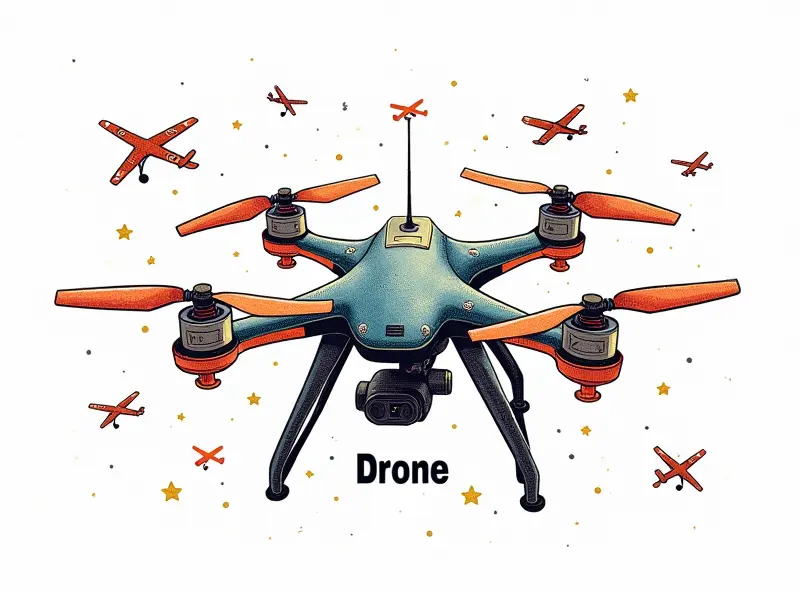Why do lithium-ion batteries die?

Maximizing the Life Span of Your Drone Battery
Lithium-ion batteries are essential components in drones, providing the power needed for flight and performance. However, these batteries have a limited lifespan due to various factors such as usage patterns, environmental conditions, and maintenance practices. To maximize the life span of your drone battery, it's crucial to understand how to properly care for them.
Why Do LiPo Batteries Degrade So Quickly?
Lithium-polymer (LiPo) batteries are known for their high energy density and lightweight design. However, they can degrade quickly due to several reasons:
- Overcharging: Exposing LiPo batteries to excessive voltage can cause internal damage.
- Deep Discharge: Allowing the battery to discharge completely can lead to irreversible capacity loss.
- High Temperatures: Operating or storing batteries in high-temperature environments accelerates degradation.
Common Causes of Rapid Battery Degradation
Rapid degradation of lithium-ion batteries is often caused by:
- Cycling Patterns: Frequent deep discharges and recharging cycles can reduce battery life.
- Inadequate Charging Equipment: Using substandard chargers or failing to use a balance charger can lead to uneven charging.
- Mechanical Stress: Physical damage from dropping or rough handling can compromise the integrity of the cells.
Secrets to Extending Lithium-Ion Battery Life
To extend the life of your lithium-ion batteries, consider these tips:
- Maintain Optimal Charging Levels: Charge your battery between 20% and 80% capacity.
- Avoid Extreme Temperatures: Store batteries in a cool place away from direct sunlight or heat sources.
- Use High-Quality Chargers: Invest in reputable chargers that support balanced charging.
Understanding Battery Capacity Loss in RC Models
Battery capacity loss is a common issue for radio-controlled (RC) models. This occurs due to the repeated discharge and recharge cycles, which gradually reduce the battery's ability to hold charge. Understanding this process can help you manage your batteries more effectively.
Tips for Prolonging Lithium-Polymer Batteries' Lifespan
Here are some practical tips to prolong the lifespan of lithium-polymer (LiPo) batteries:
- Monitor Voltage Levels: Use a multimeter or battery checker to monitor voltage levels during use.
- Store Batteries Properly: Keep them in a cool, dry place and avoid storing fully charged batteries for extended periods.
- Avoid Overheating: Ensure proper ventilation around the battery pack when charging or using it.
How Temperature Affects LiPo Battery Performance
The performance of lithium-polymer batteries is highly sensitive to temperature. High temperatures can cause rapid capacity loss and even thermal runaway, while low temperatures may reduce discharge rates and overall efficiency.
Proper Storage Tips for Lithium-Ion Batteries
To ensure your lithium-ion batteries remain in good condition during storage:
- Store at 40-65% Charge Level: This prevents deep discharge and overcharging issues.
- Avoid Humid Environments: Moisture can lead to corrosion and other forms of damage.
- Use Battery Bags or Cases: Protect batteries from physical impacts and environmental factors.
Extending the Cycle Life of FPV Racing Drone Batteries
First-person view (FPV) racing drones require high-performance batteries that can withstand intense usage. To extend their cycle life, follow these guidelines:
- Limited Deep Discharges: Avoid letting your battery drop below 20% charge.
- Use High-Quality Cells: Invest in reputable brands known for durability and performance.
- Regular Maintenance Checks: Inspect batteries regularly for signs of wear or damage.
Signs Your RC Helicopter's Battery Needs Replacement
Recognizing when your RC helicopter battery needs replacement is crucial to maintaining optimal performance. Look out for these indicators:
- Frequent Charging Cycles: If you notice the battery requires frequent recharging, it may be losing capacity.
- Deterioration in Flight Time: A decrease in flight duration can signal reduced battery efficiency.
- Voltage Drop During Use: Sudden drops in voltage during operation indicate potential issues with the battery.
Understanding Capacity Loss in RC Airplane Batteries
The capacity loss in RC airplane batteries is a gradual process influenced by various factors such as usage patterns, environmental conditions, and maintenance practices. Understanding this process can help you manage your batteries more effectively:
- Cycling Patterns: Frequent deep discharges and recharging cycles contribute to capacity loss.
- Temperature Extremes: High or low temperatures accelerate degradation.
- Mechanical Stress: Physical damage from rough handling can compromise battery integrity.
Conclusion
Lithium-ion batteries are critical components in various applications, including drones and RC models. By understanding the factors that contribute to their degradation and implementing proper care practices, you can significantly extend their lifespan. Regular maintenance, optimal charging habits, and careful storage conditions are key to preserving battery performance and ensuring reliable operation.

